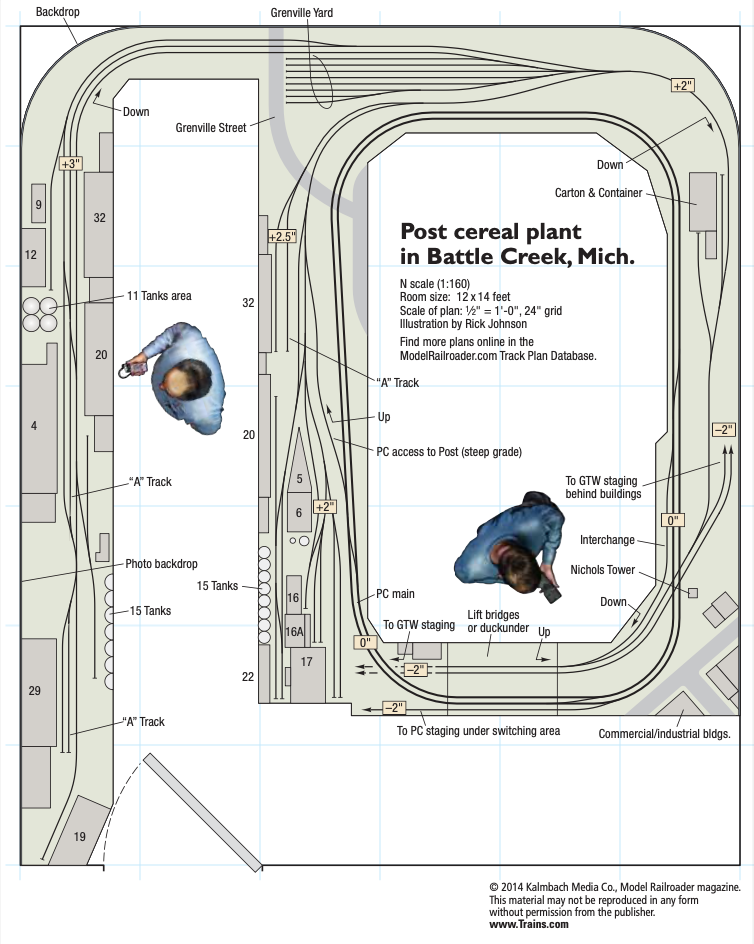
Facts & features Name: Post cereal plant in Battle Creek, Michigan Scale: N (1:160) Size: 12-0′ x 14-0′ Prototypes: Grand Trunk Western and Penn Central Locale: Battle Creek, Michigan Era: 1970s Style: Single deck Mainline run: Not applicable Minimum radius: 18″ Minimum turnout: no. 6 Maximum grade: 3 percent Benchwork: L-girder with risers and open-grid […]
Read More…
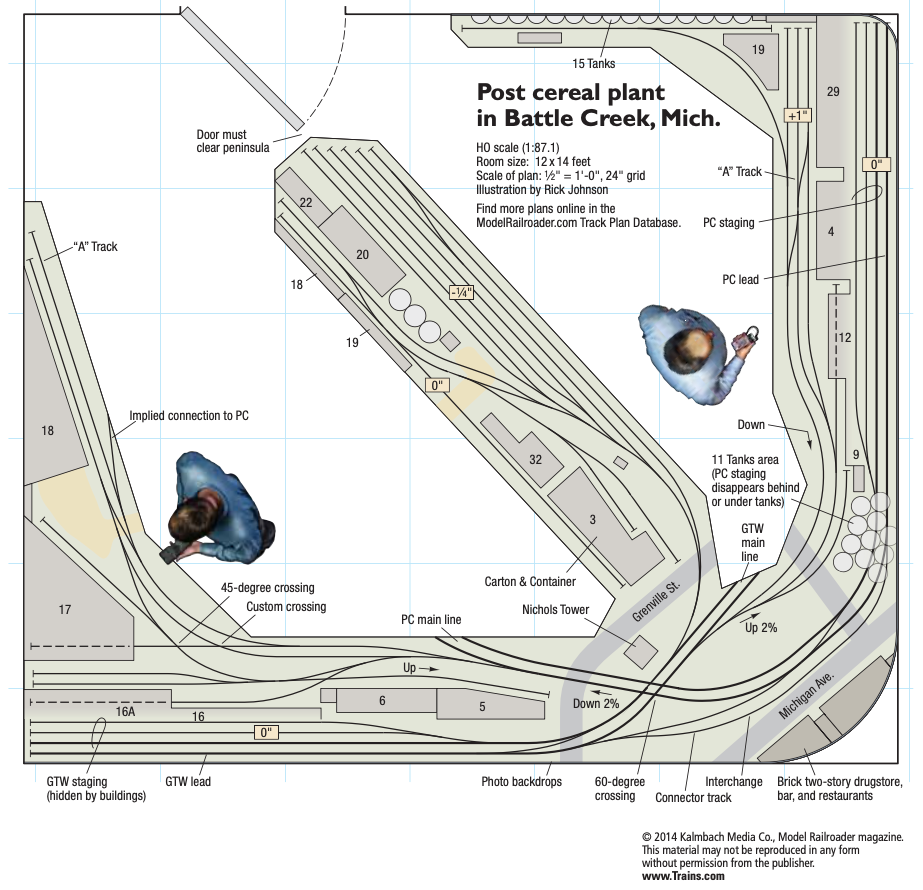
Facts & features Name: Post cereal plant in Battle Creek, Michigan Scale: HO (1:87) Size: 12-0′ x 14-0′ Prototypes: Grand Trunk Western and Penn Central Locale: Battle Creek, Michigan Era: 1970s Style: Single deck Mainline run: Not applicable Minimum radius: 30″ Minimum turnout: no. 6 Maximum grade: 2 percent Benchwork: L-girder with risers and open-grid […]
Read More…
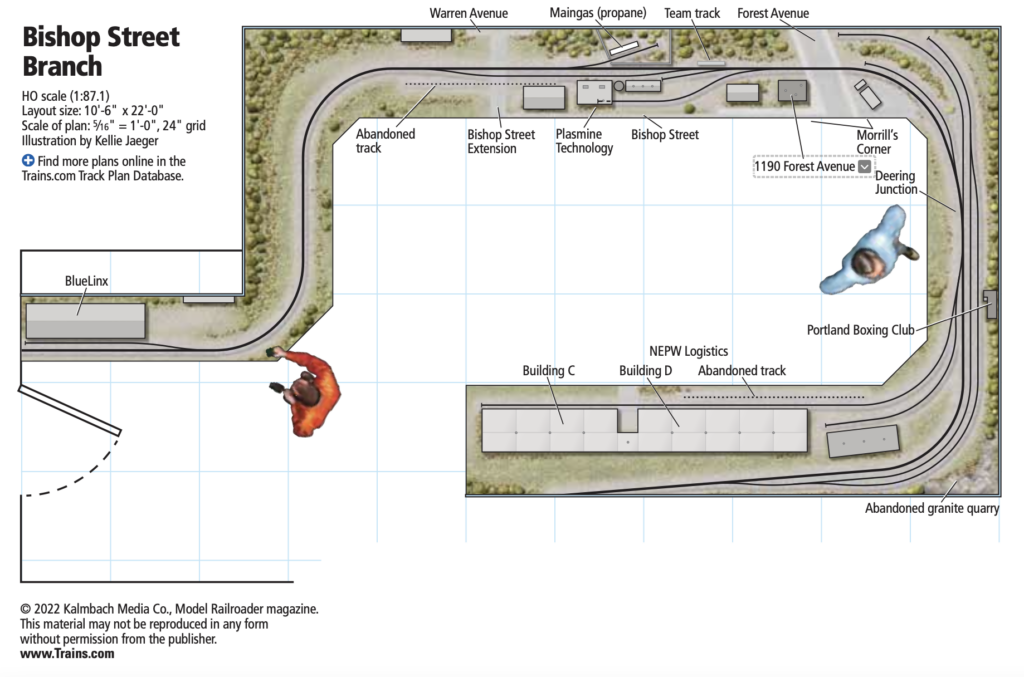
Facts & features Name: Bishop Street Branch Scale: HO (1:87.1) Size: 10′-6″ x 22′-0″ Prototypes: Guilford/Pan Am Railways Locale: Portland, Maine Era: Late 1980s through the 1990s Style: Walk-in Mainline run: None Minimum radius: 24” Minimum turnout: no. 6 Maximum grade: None Benchwork: Open grid Height: 51″ Roadbed: 1⁄2″ birch plywood with N scale cork […]
Read More…
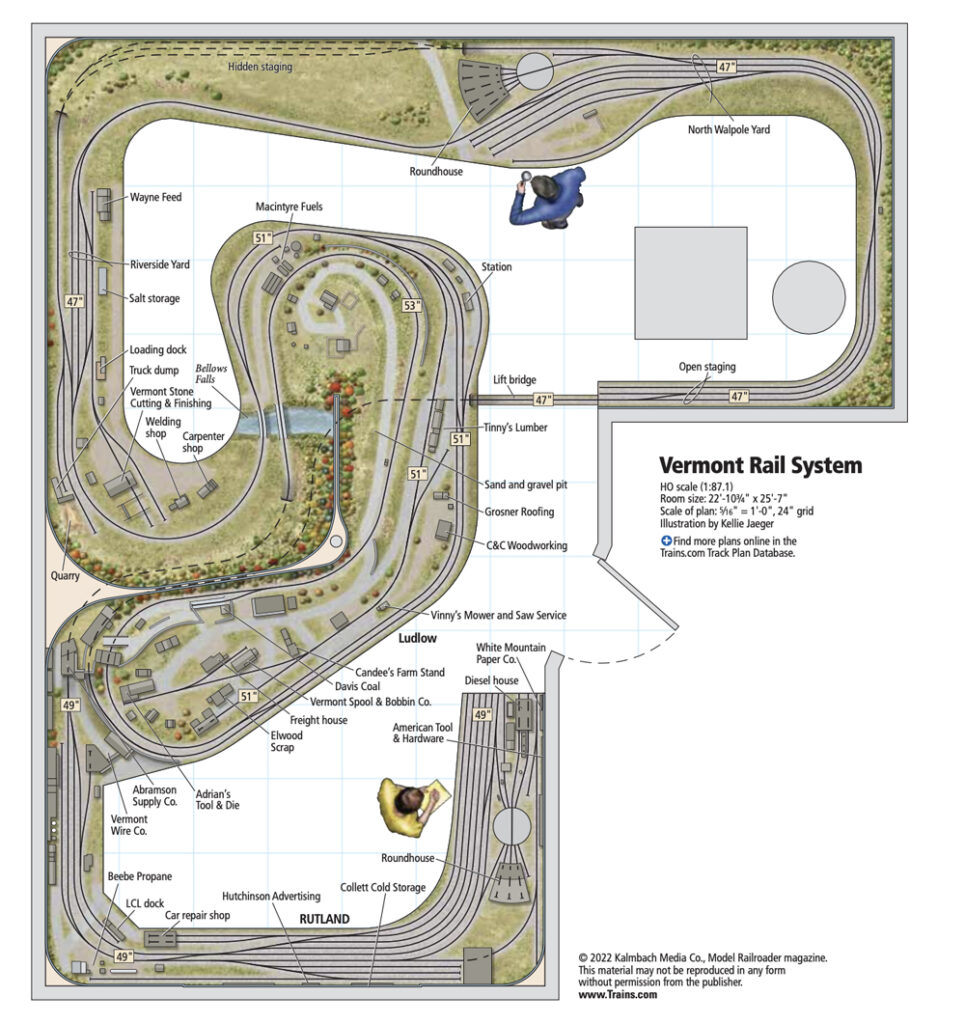
Facts & features Name: Vermont Rail System Scale: HO (1:87) in standard, narrow (3-foot), and dual gauges Size: 22’-103⁄4” x 25’-7” Prototypes: Vermont Rail System, Rutland Railroad Locale: Vermont Era: 1960s to present Style: Walk-in Mainline run: 96 feet point-to-point, 106 feet loop Minimum radius: 24” Minimum turnout: no. 4 (yards), no. 6 (main) Maximum […]
Read More…
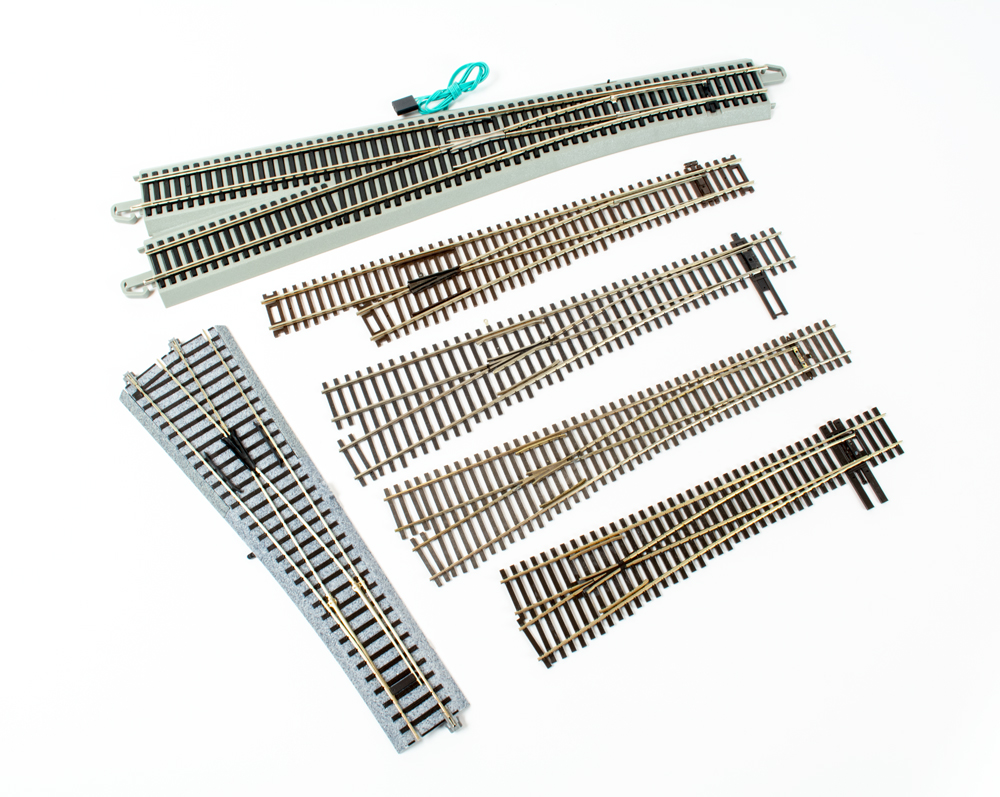
HO scale number 6 turnouts HO scale number 6 turnouts. Running trains in a circle or oval may hold your attention for a little bit, but eventually you’ll want your trains to go somewhere beyond that basic loop. That’s where turnouts enter the scene. Turnouts let you split one line into two, design yards, model […]
Read More…
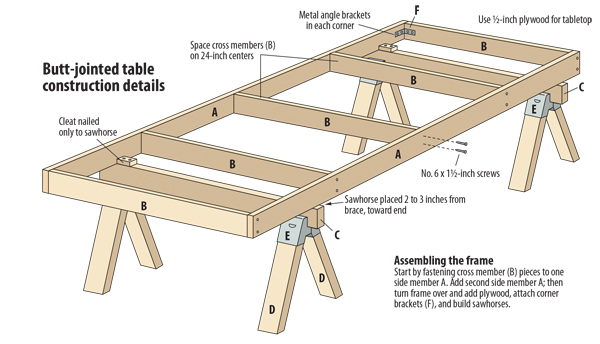
Giving your trains a permanent home starts with building a train table. Here are two popular construction types: butt-jointed and L-girder. We’ll show you how to build a simple 4 x 8-foot train table using both techniques. Modelers have been using these method since the early years of the hobby. In fact, the information and […]
Read More…
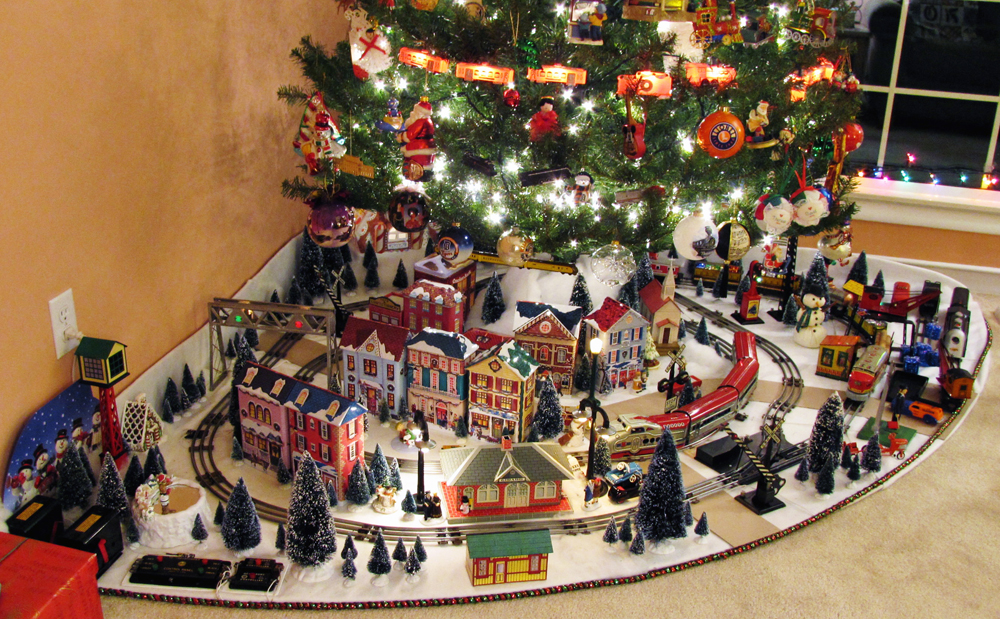
For the past several years I’ve enjoyed building a small toy train Christmas layout for the holiday season. I challenge myself to develop a new track plan every year. By using O-27 tubular track, I’ve been able to come up with a variety of interesting track plans that fit nicely under my Christmas tree. This […]
Read More…
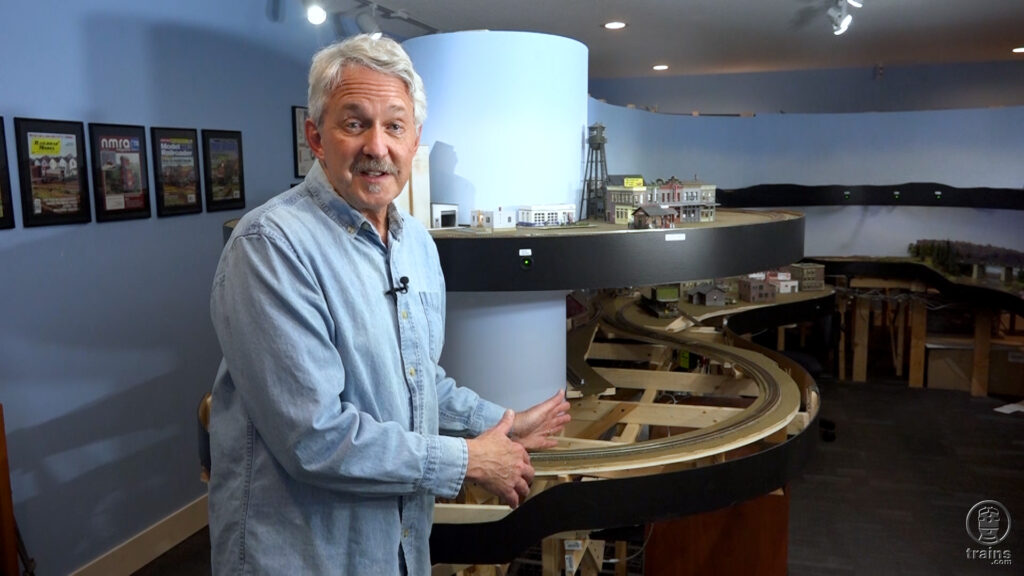
In this episode, Host Gerry Leone acknowledges two areas on his layout where he needs to rethink the track arrangements. He discusses possible solutions and then shows how he rerouted the track on the lower and upper decks to fit his vision. Getting to know Gerry Leone Back on Track host Gerry Leone is just […]
Read More…

In this episode, Host Gerry Leone acknowledges two areas on his layout where he needs to rethink the track arrangements. He discusses possible solutions and then shows how he rerouted the track on the lower and upper decks to fit his vision. Getting to know Gerry Leone Back on Track host Gerry Leone is just […]
Read More…

With the HO scale Virginian Ry. benchwork in the Model Railroader workshop, managing editor David Popp begins laying down track and cork roadbed. He describes some of the changes that he had to make to the track arrangement for this model train layout. You’ll also learn how David saved space on the Virginian by using […]
Read More…

With the HO scale Virginian Ry. benchwork in the Model Railroader workshop, managing editor David Popp begins laying down track and cork roadbed. He describes some of the changes that he had to make to the track arrangement for this model train layout. You’ll also learn how David saved space on the Virginian by using […]
Read More…
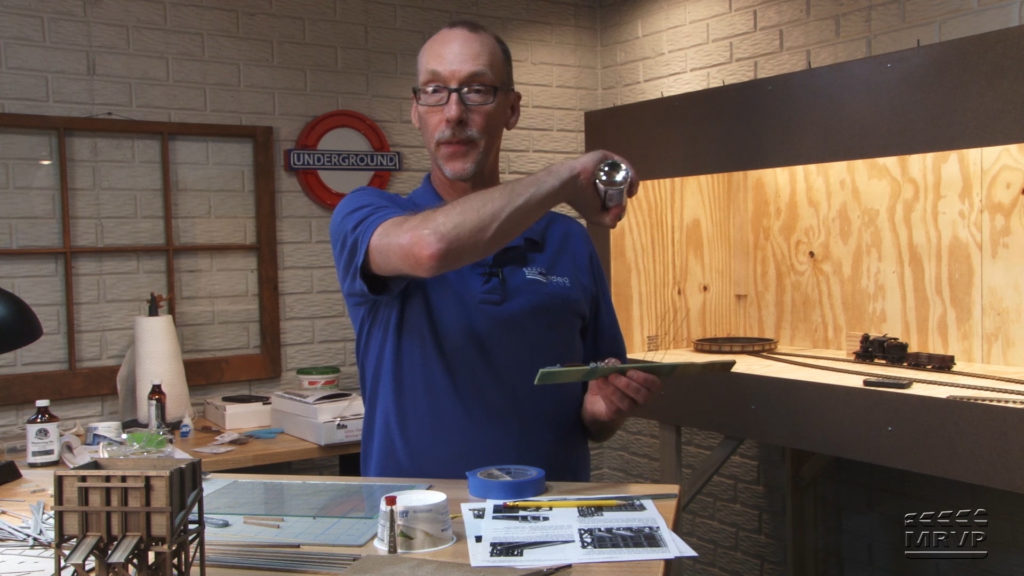
David has his hands full with projects cooking on his workbench and the Sand Creek On30 layout extension, referenced in MRVP’s special issue Model Railroading: The Ultimate Guide 2020 (KalmbachHobbyStore.com). Follow along as he gets down to the details on his sand loader structure and the new track configuration. […]
Read More…










